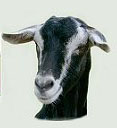Home
Pictures
Horses
Ponies
Horse Training Information
How to Train a Horse
Horseback Riding
Riding Styles
Riding History
Horse Health
Horse Behavior
Horse Colors and Markings
Horse & Pony Breeds
Mixed Breeds
Horse Types
Getting your first horse or pony
Horse Facts
Horse Farrier
Horse Floater
Horse Tack and Supplies
Assateauge Island
Budweiser
Cats & Rats
Cloverleaf Stables
Brandywine Horse Club
Farm Animals
Horse Music Videos
Silly Animals
Vacation Riding
Site Updates
Privacy Policy

Maguire Farm
HorsesWithAmie

|
Picture(s) needed
Please do NOT send pictures out of books, magazines, or off other web sites unless you own the rights to the photo.

Saddlebred
| History |
The Saddlebred was developed by settlers in the southern states of North America in the early 19th century. Interbred by the Narragansett Pacer, which is a horse from Rhode Island with a speedy strain of pacing, and the thoroughbred. As a result of crossing these two breeds we were left with a horse that was comfortable to ride for long hours spent in the saddle. The saddlebred was also just as good at pulling a carriage. The American Saddle Horse Breeders' Association(ASBA) was formed in 1891. The Saddlebred is very versatile in its discipline of riding, it can be seen working cattle or competing in shows under saddle or Harness. When at shows the saddlebred is classified as with three or five-gaited. A three-gaited horse is shown at the walk, trot and canter. The walk is a springy action, the trot is a high action and the canter is slow. A five-gaited horse has two extra paces known at "the slow gate" and "the rack". The Slow gate is a high-stepping, four beat gate in a slow restrained manner. The rack is a fast flashy four-beat gait. Each foot strikes the ground at even intervals and is free of any lateral movement or pacing. Some competitors will let the feet grow out unnaturally long to enhance "the rack" and they will operate on the tail to get it high set. |
| Conformation |
Large eyes set well apart, small, alert ears and wide nostrils; long, arched neck; sharp withers with sloping shoulders; short strong back; hind-quarters are well muscled with a high set tail; straight strong limbs with sloping pasterns, sound hoofs and open at the heel. |
| Height |
15-17hh; average 15.3hh
(hh= Hands High, one hand is 4 inches) |
| Color |
Usually chestnut, bay, black or gray; also palomino, spotted and occasionally roan |
Back to Horse Breeds
|
|

